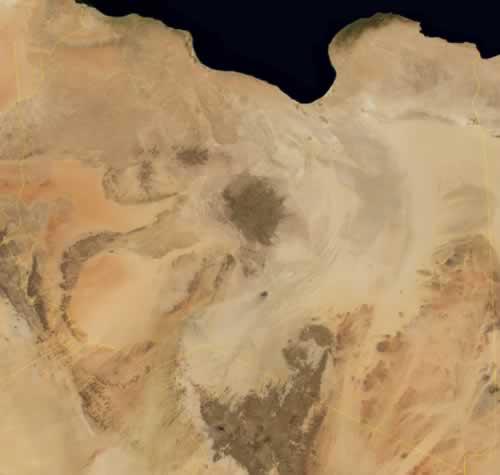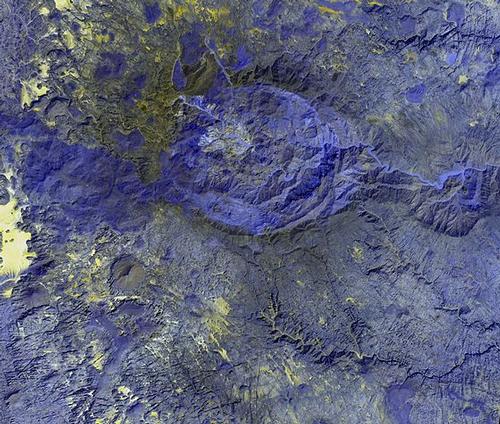LIBYA

Geography and Landscape
Geography
Libya is located in North Africa. Libya is one of the largest countries in Africa. It shares its borders with Tunisia and Algeria in the west, with Egypt in the east and with Niger, Chad and Sudan in the south. To the north, Libya borders the Mediterranean Sea. The surface area of Libya is 1,759,540 square kilometres.

Landscape
About 90% of the country is desert (Sahara) with plateaus and depressions, and endless sand plains with sand dunes. Here and there, oases can be found. The almost 2000 km long coastal strip is flat and green and here is usually enough rainfall for the few agricultural areas Libya has. Devastation of these green areas is always lurking.
The country has no lakes or other significant bodies of water: of the 1,759,540 square kilometres of territory, all is land. However, a project is under way to turn sub-Saharan water into a kind of artificial river to supply coastal towns. In the south, along the border with Chad, there is the Tibesti massif. The highest mountain, Bikku Bitti (2267 m), is located there. The lowest point is the Sabkhat Ghuzayyil depression (-47 m).
 Satellite photo of Bikku Bitti, LibyaPhoto: NASA ASTER (& Bourrichon for cropping) - GLOVIS in the public domain
Satellite photo of Bikku Bitti, LibyaPhoto: NASA ASTER (& Bourrichon for cropping) - GLOVIS in the public domain
Climate and Weather
Libya has a desert climate except for the coastal strip. In the desert, the days are extremely hot and the nights freezing cold. There is practically no rain. The Fezzan region, with the city of Sabha, is one of the driest places on earth. In spring and autumn, the ghibli, a hot Saharan wind, blows from the south. Unhindered by natural barriers, the wind reaches all corners of the country. The ghibli brings enormous amounts of sand and dust with it. The sky turns reddish brown and visibility is less than 30 metres. The daytime temperature is often around 40 degrees Celsius.
Plants and Animals
Plants
Not much grows in the Libyan desert, but in "wet" years, all kinds of grasses cover the coastal strip and the eastern plateau. Juniper and mastic trees also grow there. In the south, date palms, olive trees and orange trees can be found in various oases.
Animals
Many migratory birds settle in Libya and birds of prey such as eagles, hawks and vultures are common. There are also hyenas, gazelles, fennecs, wild cats, desert rats and other rodents. In the oases there are scorpions and reptiles, such as the poisonous viper. But above all, there are many dromedaries to be seen.
Sources
Elmar Landeninformatie
CIA - World Factbook
BBC - Country Profiles
Copyright: Team The World of Info